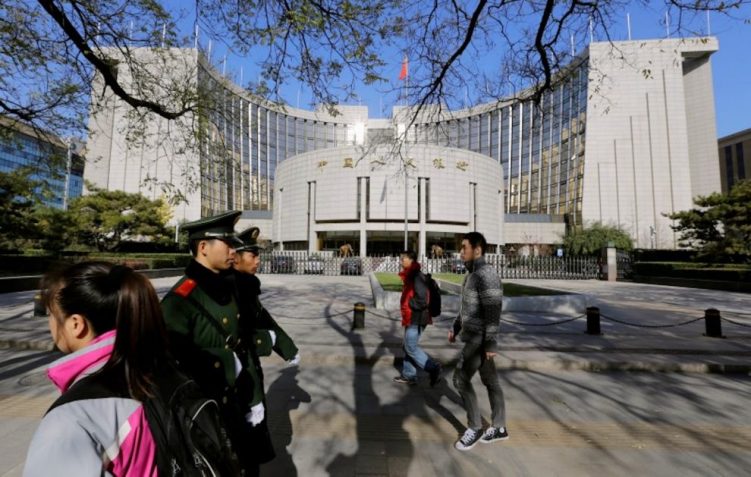China’s central bank injected 234.6 billion yuan ($33.3 billion) into the banking system on Monday, when it cut the rate for 14-day cash.
The injection via open market operations by the People’s Bank of China (PBOC) was the first such move for months. Analysts said it signalled the PBOC’s intent to ease monetary conditions, but many have begun to question whether the country can still meet its economic growth target (5% of GDP) for the year.
The PBOC said it wanted to “keep quarter-end liquidity adequate at a reasonable level in the banking system”. It added 160.1 billion yuan via 7-day reverse repos at 1.70%, it said in a statement. It also injected 74.5 billion yuan via 14-day reverse repos at 1.85%, compared with 1.95% during the previous injection, Reuters said.
ALSO SEE: US Plan to Ban Chinese Tech in Vehicles on American Roads
Analysts said the funding operation in itself wasn’t a major policy easing. China has typically used 14-day repos to help the banking system tide over long holidays, and the last time it did so was ahead of a spring break in February.
Monday’s injection comes ahead of China’s National Day holidays starting on October 1, and the cut in rates aligns the 14-day repo rate with the shorter 7-day repo rate which was cut in July.
“I wouldn’t take this rate cut as a signal that PBOC loosened monetary policy further,” Zhang Zhiwei, chief economist at Pinpoint Asset Management, said.
“Nonetheless, I do expect PBOC will cut 7-day repo rate as well as the reserve requirement ratio in the coming months. There is a press conference tomorrow (September 24) when the financial regulators will shed light on their policy stance.”
The world’s second largest economy is battling deflationary pressures, and struggling to lift growth despite a series of policy measures aimed at spurring domestic spending.
Speculation that it will hasten monetary easing perked up last week, after the US Federal Reserve kicked off its easing cycle with a hefty half-percentage-point rate cut. The PBOC last cut its short and long-term benchmark lending rates in July.
‘Bracing for prolonged hostility’
China reported strong export data in August – an 8.7% year-on-year increase, but that trade achievement was coupled with declining investment and industrial activity, plus disappointing domestic consumption – a 10.2% drop in property investment and retail sales rising just 2.1%.
While the US Federal Reserve’s large 50 basis-points rate-cut last week has eased pressure on the yuan, the PBOC is concerned about other factors – such as new tariffs proposed by the US, the EU and others, plus bank profitability and long-term bond yields.
Analysts in Japan say China is preparing for increased tensions with the US, particularly if Donald Trump wins the US election in November, although many say Kamala Harris is also likely to maintain tough policies on trade, technology and Taiwan.
“China is adopting a comprehensive approach to its US relations by coordinating efforts across various sectors, including economics, military, and technology, in light of the US strategy of containment that seeks to maintain technological dominance and limit China’s global market access. As a result, China is bracing for a prolonged period of hostility with the US,” the Japan Times said on Monday.
$1.4 trln stimulus needed, economist says
Meanwhile, economists at home are saying more needs to be done to stimulate growth.
Liu Shijin, a former deputy head of the Development Research Centre at the State Council, has said the country should issue at least 10 trillion yuan ($1.4 trillion) in ultra-long government bonds over the next one to two years to boost investment in ‘human capital’.
China should also address challenges faced by migrant workers in its cities, Liu said.
Other commentators say the country needs to stabilize its property sector, as about 20 million pre-sold apartments are estimated to remain unfinished.
Nomura’s chief economist Ting Lu said earlier this month that China’s economy would face a second wave of shocks and that policymakers may need to impose fiscal policies and reforms, as well as monetary measures.
The press conference on Tuesday is expected to provide clues on the PBOC plays its cards before and possibly after the US election.
- Jim Pollard, with Reuters.






















